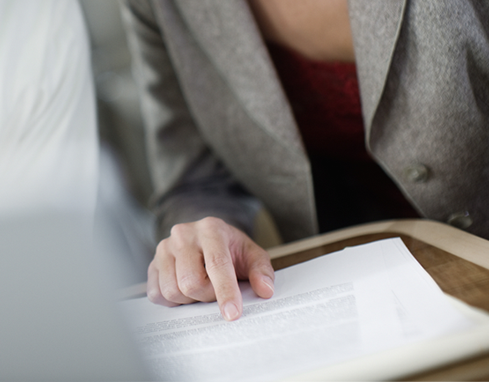

Sri Lanka
Synthesis
major macro economic indicators
| 2020 | 2021 | 2022 (e) | 2023 (f) | |
|---|---|---|---|---|
| GDP growth (%) | -3.6 | 3.3 | -7.8 | -4.5 |
| Inflation (yearly average, %) | 4.6 | 6.0 | 49.3 | 30.0 |
| Budget balance (% GDP) | -12.1 | -11.6 | -9.8 | -7.9 |
| Current account balance (% GDP) | -1.3 | -3.8 | -3.5 | -3.0 |
| Public debt (% GDP) | 95.7 | 115.0 | 137.0 | N.D. |
(e): Estimate (f): Forecast *1st April - 31st March
STRENGTHS
- Diversified agricultural production (tea, rice, coconuts, rubber)
- Strategically located at the centre of trade routes between Asia and the Middle East
- Indian, Chinese and Japanese interests
- Successful initiatives for education and health, and to ease poverty before the Covid-19 pandemic
WEAKNESSES
- Agricultural sector (7% of GDP, 30% of employment) vulnerable to imported chemical inputs and climate disasters
- Dependence on tourism and remittances
- Structural trade deficit due to high dependence on imports (fuel, intermediate products, machinery, etc.)
- Low levels of public capital expenditure due to debt servicing burden
- External financing crisis, sovereign is in default on FX obligations
- Ethnic tensions between Singhalese and Tamils
RISK ASSESSMENT
Economic contraction sparked by debt crisis
Sri Lanka is embroiled in a severe balance of payments and debt crisis that led to a sovereign default in May 2022. The government announced it was suspending external debt service payments in April 2022 and appointed financial and legal consultants to advise it on debt restructuring. Restrictions on foreign exchange liquidity owing to depleted reserves resulted in severe shortages of food, fuel, medicine and other essential goods. Sri Lanka sought urgent assistance from the IMF, reaching an agreement with the IMF Board on 20 March 2023 on a 4-year USD 2.9 billion extended fund facility programme, following assurances of financing from major bilateral creditors such as Japan, India and China, which hold 83.5% of total external debt.
The factors that pushed the Sri Lankan economy into deep recession in 2022 – including fiscal tightening, a lack of foreign exchange reserves and supply bottlenecks – will continue to weigh heavily on economic activity in 2023. Private consumption (63% of GDP) will contribute negatively to economic expansion, affected by income and job losses on back of a significant contraction in the economy in 2022. The agricultural sector, which employs 30% of the population, will be particularly hard hit, as some farmers have been forced to reduce crops or give up farming due to falling yields caused by the temporary suspension of imports of chemical fertilizers and pesticides in 2021, followed by price increases in the wake of the war in Ukraine. In addition, private consumption will indirectly suffer from durably high commodity prices, while inflation will remain high in 2023, driven by Sri Lankan rupee depreciation and high global energy and food prices. Moreover, the low level of investment, both public and private, will not help boost economic activity. Public spending will be restricted by tight fiscal policy, while private investment, already impacted by the contraction of the overall stock of credit to the private sector, will suffer from the dire economic outlook. Last, despite the slowdown in Sri Lanka's largest export markets (United States, United Kingdom, etc.), net imports will contribute positively to economic expansion. Net imports will decline, reflecting the combined effects of import compression caused by foreign exchange shortages and the continued recovery of exports of garments, food products and tourism. However, merchandise exports will continue to be impacted by supply-side constraints (frequent power cuts, prolonged input shortages, and transport difficulties disrupting supply chains, etc.), while tourism, which should benefit from the reopening of China's borders, will suffer from the violent images of social unrest in 2022.
External debt (47% of total debt) restructuring and fiscal consolidation
Pressures on the current account balance eased in 2022, due to shrinking trade deficit as imports have shrunk due to weak domestic demand and the scarcity of foreign currency, while export recovery has gained momentum. However, improvement in the current account deficit is expected to remain modest in 2023 and will be affected by a reversal in the trade deficit trend. The deficit will widen, influenced by moderating exchange rate effects (the benefit of depreciation for export competitiveness), the slowdown in Sri Lanka's export markets as well as the gradual increase in the import bill caused by the anticipated improvement in foreign exchange liquidity. The latter will not be offset by the improvement in the small surplus in the services balance, which will benefit from the modest recovery in tourist arrivals, helped by China's reopening and abandonment of the zero-Covid policy. Furthermore, registered remittances, which fell by 44% in the first nine months of 2022 due to a shift to informal means of sending money and lack of confidence in the government, are likely to continue to weigh on the current account balance. While private inflows will remain modest due to low foreign direct investment, Sri Lanka will need to draw on its foreign reserves to finance the deficit as these are replenished by the recovery in tourism receipts, the disbursement of the IMF loan and other multilateral loans (World Bank, Asian Development Bank).
Sri Lanka's fiscal position remained under pressure in 2022 due to weak government revenues prompted by recession, rising health care expenditure and energy needs. In view of mounting fiscal pressures, the government introduced fiscal consolidation reforms, which it will broaden in 2023. These reforms aim to broaden Sri Lanka's tax base and rationalise spending. The government raised the value-added tax (VAT) from 9% to 12% in June 2022, and increased corporate and personal income taxes in October 2022. At the same time, it has reduced non-emergency investments and recurrent expenditure on new civil service recruits. However, the additional revenue did not grow fast enough to close the gap with disbursements, which, despite these efforts, continued to rise. This is because relief measures to mitigate the effects of the pandemic on the poor and vulnerable segments of the population, as well as those of the rising costs of goods and services due to high inflation and the sharp exchange rate depreciation, have continued to put drag on revenues. Tax reforms introduced in 2022, however, are expected to generate higher revenues (11% of GDP), leading to an improvement in the primary deficit. This fiscal consolidation, combined with the debt restructuring initiative, should reduce the government's debt burden to a manageable level.
Tight monetary policy and declining inflation
The Central Bank of Sri Lanka raised its policy rate by a cumulative 1,050 basis points from August 2021 to 15.5% in March 2023. Monetary tightening efforts accelerated in 2022 to avoid de-anchoring of inflation expectations and end persistent demand pressures. After peaking at 69.8% in September 2022, inflation is expected to follow a downward path in 2023 as supply pressures ease, and monetary and fiscal conditions remain tight. Interest rates are therefore expected to moderate as economic conditions improve, reflecting the impact of stabilisation measures.
High political instability and lack of government credibility
The deepening economic crisis that produced soaring prices, daily power cuts, and shortages of food and essential goods angered the Sri Lankan people, who embarked on a series of protests against the then ruling Rajapaksa administration. The violent protests culminated in the resignation of President Gotabaya Rajapaksa on 14 July 2022 and the appointment by Parliament of former Prime Minister Ranil Wickremesinghe to lead the country. Despite a new government coming to power, political instability will remain high in 2023, when the lasting effects of the current economic crisis and the recent fiscal austerity measures for 2023 could trigger mass protests and result in the calling of snap presidential and parliamentary elections which are normally scheduled for 2024 and 2025, respectively.
Last updated: June 2023







